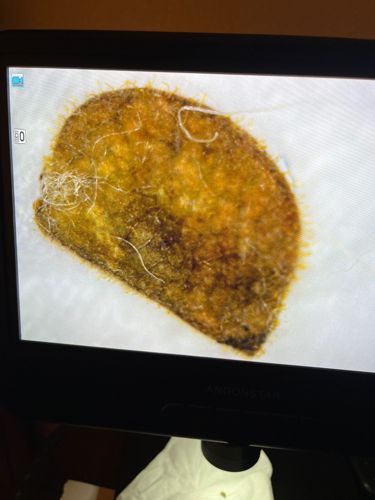Webbing Clothes Moth OR Common Clothes Moth OR Case-bearing Clothes Moth (likely a larva or its dwelling)
Scientific Name: Tineola bisselliella (Webbing Clothes Moth) OR Tinea pellionella (Case-bearing Clothes Moth)
Order & Family: Lepidoptera, Tineidae
Size: Larvae typically 0.5 to 1.5 cm (0.2 to 0.6 inches) in length; Adults have a wingspan of 1-2 cm (0.4-0.8 inches). The image appears to show a larval case or a heavily webbed area of damage from a clothes moth larva, and not the larva itself.

Natural Habitat
Indoors, particularly in closets, attics, storage chests, and undisturbed areas where susceptible materials are stored. They thrive in moderate temperatures and high humidity.
Diet & Feeding
Keratin-containing materials such as wool, silk, fur, feathers, felt, animal bristles, and occasionally cotton, linen, synthetics, or mixtures soiled with human or animal oils/food stains. They are scavengers, feeding on animal-based fibers.
Behavior Patterns
Larvae of Clothes Moths spin silk cases or tunnels as they feed, often incorporating fibers from the material they are consuming. They prefer dark, undisturbed areas. Adults are not attracted to light and are shy, often found crawling rather than flying. The entire life cycle, from egg to adult, can take 2-3 months.
Risks & Benefits
Potential risks include significant damage to clothing, carpets, upholstery, and other household items made of natural fibers. They do not bite or transmit diseases to humans. There are no known direct benefits from their presence in a domestic environment.
Identified on: 9/4/2025